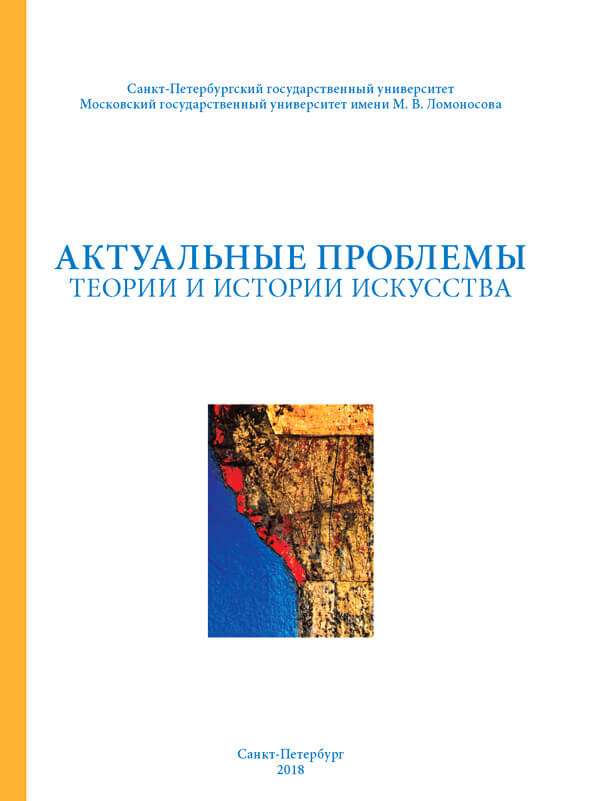Cultural and Physical Space as a Condition of Artistic Vision: The Aegean in Greek Artists Maleas, Ghikas and Tetsis
DOI:
https://doi.org/10.18688/aa188-5-46Keywords:
the Aegean, archetypal backdrop of European modernism, Greek modernism, Greek 20th-century, artistic responses, natural and architectural space, artistic creativity, joint effect, multiple artistic traditions coexisting, visual and intellectual traditions, Modern Greek artists, exchange processes, European and Oriental cultural foci, centres and peripheriesAbstract
The article investigates creative inspiration from, and response to, the Aegean Sea and islands.
Inspiration during the 20th century relates to the return to what creators perceived as a civilizing bosom. Some examples of both the conditions and the fruit of modern creativity springing from Aegean islands are examined against this ancient and archetypal background, both natural and cultural; plus, a particular gymnastics of artistic vision. This exploration is pursued through discussions on themes such as the following:
The material and spiritual formation of Post-Byzantine Aegean space: the deep descriptive (ekphrastic) faculty and tradition ingrained and recovered here, linked with the appreciation of great views from high rocks over planes, gorges and the open sea, which informed the urban design of Byzantine cities.
The sophisticated manner of adjustment to, and appropriation of, mountainous physical topography. Prismatic architectural forms are in constant discourse with the natural topography and have affected artistic representation.
The particular role of the Aegean in the formation of important artists and creators: modern intuitive interaction with the Aegean natural beauty, hard and exhilarating light, and heritage, is both material and spiritual. As is shown, the Aegean expresses the culture-nature dialectic par excellence, exemplified in the surreal metaphysical clarity and plasticity of islands like Santorini and Hydra.
There have been foreign (for instance, Brancusi’s, Giacometti’s and Modigliani’s) as well as indigenous modern creative responses to the plastic values of the Aegean and its art. Modern Greek artists like Konstantinos Maleas explored and depicted the many pictorial dimensions of islandness as the epitome of Greek space. The paper focuses on his work inspired by Santorini. Besides Maleas, the analysis stresses the particular role of the Aegean in the formation of Nikos Hadjikyriakos Ghikas and Panagiotis Tetsis, both inspired by the island of Hydra.
In all three cases, it is shown how, in parallel with the effects of the Aegean, these artists also communicated with the pictorial traditions of the West as well as the East, particularly with Japanese art.
References
Castoriadis C. I Elliniki Idiaiterotita. Apo ton Omiro ston Irakleito (The Greek Particularity. From Homer to Heraklitus). Athens, Kritiki Publ., 2007. 527 p. (in Greek).
DaCosta Kaufmann Th. The Geography of Art. Chicago, University of Chicago Press, 2004. 504 p.
De Rycke J. P.; Paisios N. P. (eds.). Ghika and the European Avant-Garde in Interwar Europe. Athens, Efesos Publ., 2004. 255 p.
De Rycke J.-P. ‘The European Model’. De Rycke J. P.; Paisios, N. P. (eds.). Ghika and the European Avant-Garde in Interwar Europe. J. P. De Rycke; N. P. Paisios (eds.). Athens, Efesos Publ., 2004, pp. 32–135.
Delivorias A. Introduction. De Rycke J. P.; Paisios, N. P. (eds.). Ghika and the European Avant-Garde in Interwar Europe. Athens, Efesos Publ., 2004, pp. 14–31.
Durrell L. The Greek Islands. London, Faber and Faber Publ., 1978. 344 p.
Elkins J. (ed.). Is Art History Global? London, Routledge Publ., 2007. 472 p.
Foster H. Art-Architecture Complex. London, Verso Publ., 2011. 302 p.
Freely J. Oi Kyklades (The Cyclades). Athens, Patakis Publ., 2007. 373 p. (in Greek).
Kotidis A. Maleas. Athens, Adam Publ., 2000. 394 p. (in Greek).
Koutsomallis K. (ed.). P. Tetsis-Thalatta (P. Tetsis-Thalatta). Andros, Goulandris Foundation Publ., 2006. 161 p. (in Greek).
Lambraki-Plaka M. (ed.). Introductory texts of sections. Ethniki Pinakothiki — 100 Chronia. Tesseris Aiones Ellinikis Zografikis (National Gallery 100th Anniversary. Four Centuries of Greek Painting). Athens, National Library Publ., 1999. 699 p. (in Greek).
Loukaki A. Living Ruins, Value Conflicts. 2nd ed., London, Routledge Publ., 2016a. 377 p. (1st ed., Ashgate Publ., 2008).
Loukaki A. The Geographical Unconscious. 2nd ed., London, Routledge Publ., 2016b. 431 p. (1st ed., Ashgate Publ., 2014).
Mavrotas T. (ed.). P. Tetsis —E Apotheosi tou Zografiki 2010–2014 (P. Tetsis — The Apotheosis of Landscape-Painting 2010–2014). Athens, Theocharakis Publ., 2015. 144 p. (in Greek).
Michaelides C. E. The Aegean Crucible-Tracing Vernacular Architecture in Post-Byzantine Centuries. St. Louis, Missouri, Delos Press Publ., 2003. 384 p.
Miller H. The Colossus of Maroussi. New York, Colt Press Publ., 1941. 244 p.
Rancière J. Aesthetics and Its Discontents. Oxford, Polity Publ., 2009. 143 p.
Trypanis C. A. The Penguin Book of Greek Verse. London, Penguin Publ., 1971. 704 p.
Vacalo E. Fysiognomia tis Metapolemikis Technis stin Elleda — O Mythos tis Ellinikotitas (The Physiognomy of Postwar Art in Greece — The Myth of Greekness). Athens, Kedros Publ., 1983. 139 p. (in Greek).


